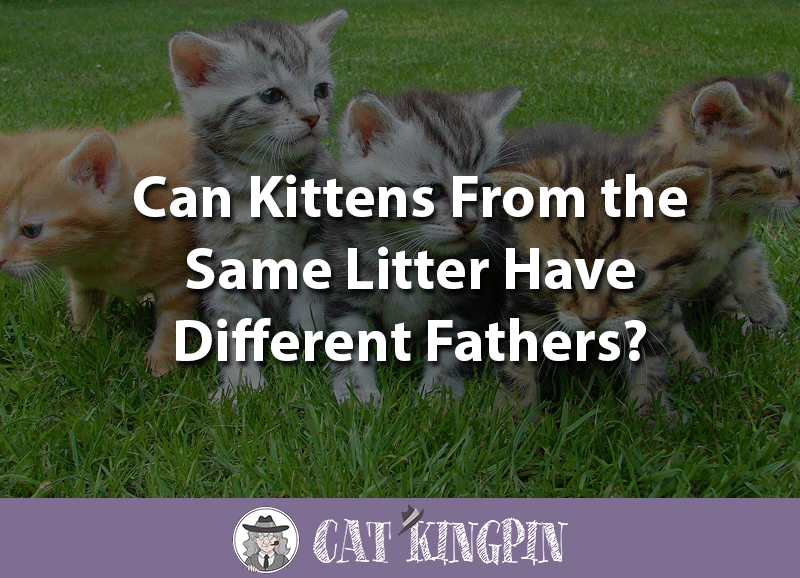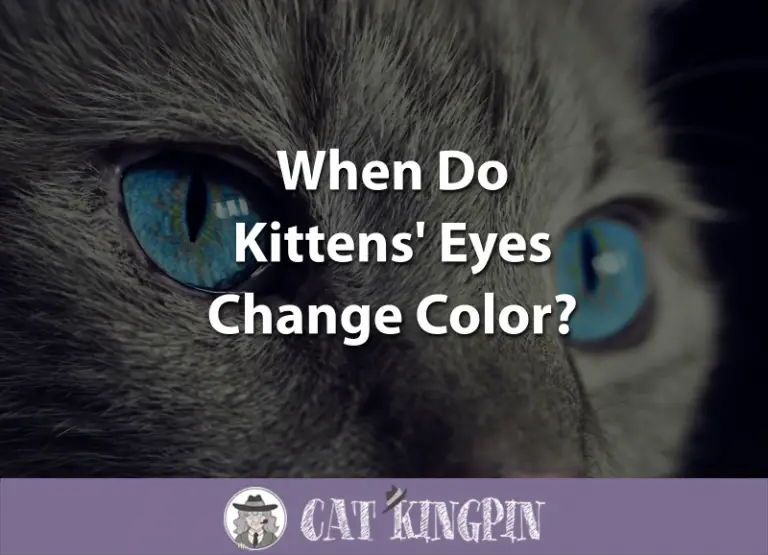Can Kittens From The Same Litter Have Different Fathers?
What’s more exciting than a new litter of kittens? It’s always fun to wonder what the kittens will look like- more like mom, or more like dad? By the time kittens stop growing, they usually look like one of their parents.
We all know it’s possible for kittens to vary in color, even in the same litter, but have you ever come across a kitten that you just can’t figure out? Maybe your two black cats had an orange kitten, or your two white cats had a tabby.
While cat genetics are varied and fascinating, the answer to these mysteriously colored kittens may be something less complicated: it is entirely possible for kittens from the same litter to have different fathers.
Since this is a relatively common phenomenon with cat owners, we wanted to give you the science behind litters with different dads, and tips on how to prevent it if you’re planning a litter.
In this article, we’ll cover the following;
- The Science Behind Kitten Paternity
- How to Prevent It
- Does This Happen Only With Cats?
The Science Behind Kitten Paternity
When you suspect that your litter of kittens may have mixed paternity, the first thing to consider is your momma cat. Does she have access to the outdoors? Has she been exposed to multiple male cats? If your litter of adorable kittens has more than one father, it’s because the mom let her hormones get the best of her.
In the science world, this phenomenon is called “heteropaternal superfecundation.” Cats, just like most mammals, release ovum (eggs) during their reproductive cycles. If she releases 5 ovum, and a male cat fertilizes all five, then five kittens will be born.
But unlike most mammals, cats don’t release all of their eggs at once. They stagger them, and different eggs may be released at different times. If your female cat releases multiple eggs over the course of a few days, they will be fertilized by whichever male she comes across her during that time.
If she breeds with your cat on Monday, and then with another male cat on Tuesday, the embryos created by these breedings will have different dads. In fact, it’s possible (though unusual) for every single kitten in the litter to have a different father!
Because female cat reproductive cycles last anywhere from 5-20 days, your female cat has plenty of opportunity to seek out multiple males! And she probably can’t help herself. Her body is so inundated with hormones that she will actively seek out a mate (or multiple mates) and these hormones make her absolutely irresistible to male cats as well as an irresistible urge to roll around.
Every male in a 2-mile radius will be seeking her out. And because instinct is telling your female cat to mate as much as she can, she is unlikely to refuse a potential suitor.
Check out this video of kittens meeting their dad for the first time. This is a good example of kittens not quite looking like either of the parents… Where did their black spots come from, I wonder?
https://www.youtube.com/watch?v=3c-oy72yNhQ&t=18s
How to Prevent It
Unless you had an intended male cat in mind for breeding, it us unlikely that mixed paternity will bother you. Kittens are cute no matter what, right? But if you want to breed a purebred litter of kittens, making sure your cat only mates with one male is very important!
So, how can you make sure your female cat doesn’t get the wandering eye?
Well, you can’t. If your female cat has access to multiple males, it is very likely that she will make the rounds. The only option is to keep her secluded from every male cat who isn’t her intended partner.
You should make sure she isn’t allowed outside (as there are surely tomcats waiting at your front door for her). If there are multiple intact male cats in the home, you’ll want to keep her completely separated from them for the entirety of her heat cycle, even if that means restricting her to certain areas of the house. Mating in cats occurs very quickly (and often lasts less than a minute) so you won’t have much room to correct a mistake once it’s in the process of being made!
The best course of action is to keep your female cat quarantined, and only give her access to the specific male you’d like her to mate with. And remember, you’ll need to be diligent!
Does This Happen Only With Cats?
Believe it or not, litters fathered by multiple males aren’t as uncommon as you might think. This phenomenon is also relatively common in dogs and other animals that routinely give birth to multiple young at a time.
There have even been documented cases of human heteropaternal superfecundation, though it is extremely rare. Many of these instances happened as a result of human error during in vitro fertilization, in which a human female is accidentally, impregnated using the sperm of two males, resulting in twins with different fathers. However, it can also happen naturally when a woman ovulates while in the early stages of pregnancy, and then a different man fertilizes the second egg.
Conclusion
If faced with an unusual litter of kittens, don’t worry too much. Unless you were purposefully breeding a specific set of cats, multiple fathers really only means multi-colored kittens.
If you have a planned breeding gone awry, here are some steps to make sure it doesn’t happen again:
1. Identify the male cat you’d like to father the litter.
2. Make sure your female cat only has access to this specific male, and keep them together for a few days.
3. Isolate your female cat from all other males for the duration of her cycle, and even longer if you want to be extra safe.
If you’re wondering what happens when a cat gives birth, then click here to find out.
Have questions about kitten paternity and the science behind this fascinating phenomenon? Ask us in the comments!







